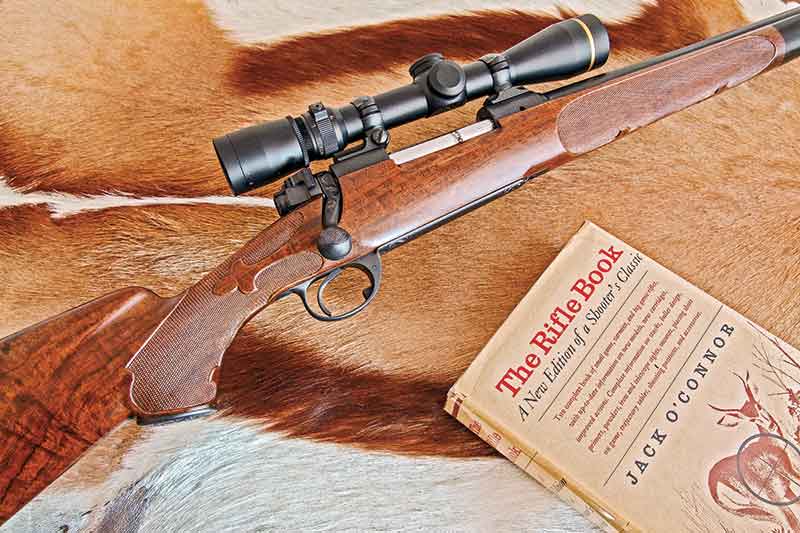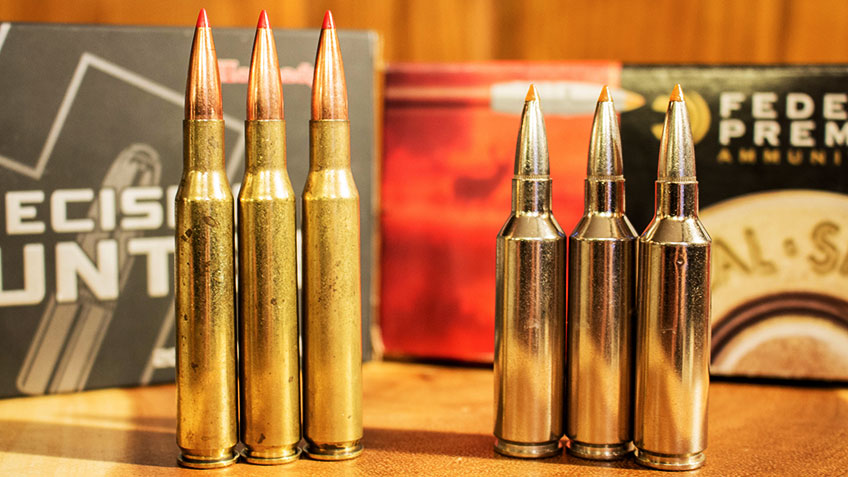
270 Winchester (aka WCF)
Not much is known or can be said definitively as to why this particular caliber came to be. Since its inception in 1925 there is little doubt as to its success on animals from Coyotes to Moose and everything in between; not to mention its popularity across the land as it is observed in the hands of many hunters, new and seasoned, young and old, male and female alike.
Jack O’Connor is instrumental in the popularity of the 270 WCF, as it was toted as his main weapon of chosen for sheep, mule deer, and open country western hunting. (The truth be told as most rifle loonies are inclined to do, we use any and everything we can get our hands on, after all you can never have to many back-up rifles with you to fill that one tag) Jack’s training was as a journalist so it’s no wonder he could spin up a yarn or convey a tale through his pages in Outdoor Life for example, to capture the wonder and amazement of a youngster or a youngster at heart.
The 270 came to be in a era common to the whole of the human era; one in which mankind (I believe) as a hole has been blessed or cursed to feud about since the beginning. That being the age old argument of heavy and slow versus light and fast. Everyone has a preference and a strong opinion, fast snappy sportscars or slow heavy trucks, crotch-rocket motorcycles or larger tour cruising bikes, there’s the light quick pool-cue crowd, the light fast bowling ball group, and then there’s the heavy side of things. The sky is the limit and the subject is endless, so too in firearms and cartridges.

In 1943 Roy Weatherby introduced his famous line of ultra velocity double-radiused shoulder cartridges with the 270 Weatherby Magnum. For the next nearly 60 years these were the only options available in this caliber. Bolt cartridges fit in a standard length bolt action rifle and sling the same 110-160 grain bullets, although the 130 and 150 became the most popular bullet weights. The fast and flat shooting 270 Winchester became the faster and flatter shooting 270 Weatherby.

Enter 2002, where the gun world receives two answers to an age old question. Why not more .270 caliber cartridges? Winchester introduced the 270 WSM (Winchester Short Magnum) which admittedly peaked my interest but was short lived. The WSM and WSSM family of cartridges with there “short fat” and “super short fat” characteristics were initially problematic for those wanting to convert rifles to cartridges of the fad and to green handloaders.

The 6.8 SPC (Special Purpose Cartridge) was also introduced in the AR platform as a “special” Law Enforcement and/or Military application cartridge. This cartridge delivered better terminal performance in the warfare one might encounter in an urban setting. In the game fields lighter bullets were driven slightly slower than the standard ol’ 270 resulting in observably quick kills on deer size game.
The 270 WSM and 6.8 SPC are both an answer and both have a dedicated following. Ammo of either can readily be found on many box store shelves and most rural gunstores out west will have a box or two of 270 WSM in their cabinet. Whereas these cartridges may be an answer for some for others the main question still remains.
Most 270 aficionados consistently laud the lack of available projectiles and the inability to push heavy ones faster when available. Nosler makes a 160 grain Partition, which I’ve used on elk. Barnes and Speer made at o a 170 grain round-nose and semi-spitzer bullet at one point. While Woodleigh still makes a 180 round-nose for the toughest of game yet all these bullets were/are, for being so heavy, slow. Often used for hunting the woods or brush country and intended for the largest of critters such a Elk, Moose, Black Bear and even Brown Bear at close range.
My Experience
In 1990 my dad began work on a rifle. The action was a 98 Mauser with a 24″ barrel, short chambered for 270 Winchester. The stock was pre-inletted with a monte carlo style comb and fold over cheek piece. It was a project for my uncle’s wife for which I was used as the mold for customizing the stock dimensions and characteristics.
I spent what seemed like hours with 400 grit sandpaper wrapped around a wooden dowel shaping the grip and wrist of the stock. Then up to 600 grit carefully working around the cheek-piece making sure not to round the edge lines, finally 800 and 1000 grit. A Redfield style, two-piece base and rings topped with a Leupold Vari-X, 3-9×33 Compact scope, adjusted to my eye and length of pull of course finished out the project.
When the fall of 1992 arrived several Antelope and Deer tags found their way into my pocket and this rifle found its way into my hands. My uncle’s marriage just wasn’t meant to be and the ol’ 270 Winchester became a permanent fixture in my hands throughout my high-school career and pretty much ever since.
Being of the “heavy and slow” school of thought (think Elmer Keith), dad loaded 160 grain Nosler Partitions for elk and 140 grain Hornady boat tail soft-points for everything else. For me, a high school young blood (of the Roy Weatherby persuasion) this simply was not good enough. I found some 130 grain bullets that I could drive faster. Loading these up for Antelope I was ready to stretch the barrel on some long range “prairie goats.”
My first excursion into the Antelope fields of southern Wyoming proved fruit-less as I missed several specimens that first trip. Then I recalled something the ol’ man said about, “very rarely will a cartridge fire two differing projectile weights to the same point-of-impact.”
Well no wonder. I had it sighted 2″ high @ 100 yards for the very geriatric 160 grain bullets traveling 2625 fps and here I was trying to snipe antelope with a 130 grain bullet moving at 3100 fps. A quick range trip with a brick, a card board box and a black marker and I was back in business for the weekend.
I did eventually graduate from the “School of Speed” just for the sake of speed, although as an alumni of the school I still use velocity but nowadays it serves a very specified purpose and is limited to certain cartridge and firearm combos.
After my compulsory education I enlisted in the Navy where I learned the true meaning of the word…Never Again Volunteer Yourself. Returning to Wyoming with a wife and child found me in the fields again but unable to hunt. As my teenage years found me in violation of certain “game laws” by which my privilege was revoked for a period. My dad died in 2001 then 9/11 occurred and I found myself heading back to California for what else but more education.
Hunting Inyo Mule deer in the Sierras was quite a bit different than hunting the coastal Blacktail of Cape Mendocino and Humboldt county. Both experiences was quite a leap from hunting Mule deer in the intermountain sage-plains, Juniper and Aspen forests of the southwest and western Rockies. Three hunting seasons found the trusty 270 on my shoulder albeit the third year I did build a “more suitable” light rifle and cartridge combo (more on that one later).
I have used many calibers and cartridges since those days in the 90’s and early 2000’s but whenever I have a big game tag in hand the 270, like a faithful ol’ dog, always gets to ride in the truck. If it’s not my primary weapon it functions as back-up. For antelope, deer and elk it works and in my hands in more recent years it works real well which is why the 270 Winchester is my favorite big-game hunting cartridge.